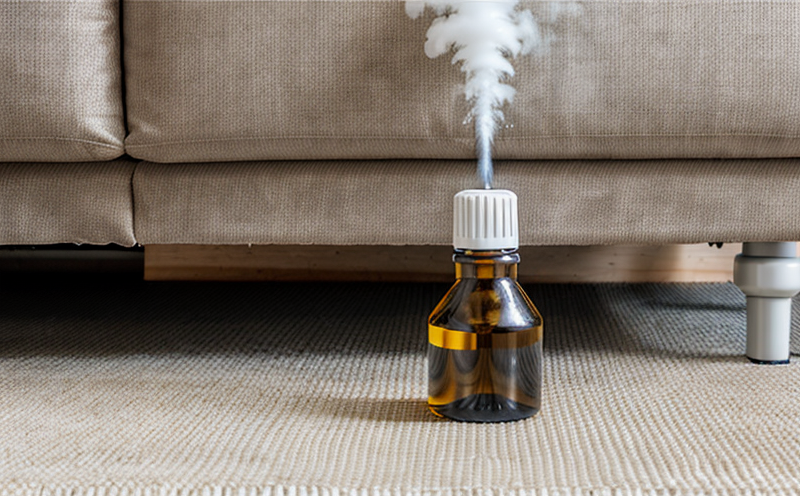Volatile organic compounds (VOCs) and odor production
Unmasking the Hidden Dangers of Volatile Organic Compounds (VOCs) and Odor Production How Eurolab Can Help
As a business owner, youre likely no stranger to the challenges of maintaining a clean and healthy work environment. However, theres one often-overlooked issue that can have far-reaching consequences for your employees, customers, and bottom line volatile organic compounds (VOCs) and odor production. These invisible threats lurk in every corner of your facility, from manufacturing equipment to office spaces, wreaking havoc on indoor air quality and overall well-being.
In this comprehensive guide, well delve into the world of VOCs and odor production, exploring their causes, effects, and the importance of addressing them through laboratory testing. At Eurolab, our team of expert scientists is dedicated to helping businesses like yours identify and mitigate these risks, ensuring a safer, healthier environment for everyone.
What are Volatile Organic Compounds (VOCs) and Odor Production?
Volatile organic compounds (VOCs) are chemicals that evaporate easily at room temperature, releasing gases into the air. These emissions can come from various sources, including
Materials and products Furniture, paint, adhesives, cleaning agents, and even building materials can release VOCs.
Equipment and machinery Manufacturing equipment, ventilation systems, and office printers can also contribute to VOC emissions.
Human activities Cigarette smoke, cooking, and personal care products are just a few examples of human-generated VOCs.
When VOCs accumulate in enclosed spaces, they can cause unpleasant odors, triggering respiratory issues, headaches, and fatigue among employees. Prolonged exposure to these chemicals has been linked to serious health problems, including cancer, neurological damage, and reproductive issues.
Why is it Essential for Businesses to Address VOCs and Odor Production?
Ignoring VOC emissions and odor production can have severe consequences
Regulatory non-compliance Failure to address VOC-related issues can lead to costly fines, penalties, and even business closure.
Employee health and productivity Exposure to VOCs and odors can result in absenteeism, decreased morale, and reduced job performance.
Reputation damage Unpleasant odors and visible signs of contamination can harm your brands reputation and deter customers.
Increased maintenance costs Neglecting VOC-related issues can lead to premature equipment failure, requiring costly repairs or replacements.
The Advantages of Using Volatile Organic Compounds (VOCs) and Odor Production Laboratory Services
Eurolab offers a comprehensive laboratory service designed to identify and mitigate VOC-related risks. Our benefits include
Key Benefits
Accurate identification Our expert scientists use advanced techniques, such as gas chromatography-mass spectrometry (GC-MS), to precisely detect and quantify VOC emissions.
Customized solutions Based on our findings, we provide tailored recommendations for reducing VOC levels, improving air quality, and preventing future issues.
Compliance assurance Our testing meets or exceeds industry standards, ensuring your business remains compliant with regulations.
Cost savings By addressing VOC-related problems early, you can avoid costly repairs, replacements, and potential lawsuits.
How We Can Help
Sampling and analysis Eurolab collects air samples from your facility, which are then analyzed using our state-of-the-art equipment.
VOC identification Our experts identify specific VOCs present in the samples, providing a detailed breakdown of their concentrations.
Recommendations and implementation Based on our findings, we offer practical solutions for reducing VOC emissions, improving ventilation, and implementing best practices.
Frequently Asked Questions (FAQs)
Q What are the most common sources of VOC emissions in industrial settings?
A Common sources include manufacturing equipment, materials, and human activities such as smoking and cooking.
Q Can I perform VOC testing myself, or is it better to hire a professional laboratory like Eurolab?
A While DIY testing kits exist, they often lack the precision and accuracy of professional laboratory analysis. Eurolabs expertise ensures reliable results and actionable recommendations.
Q What are some common VOCs associated with indoor air quality issues?
A Some common VOCs include formaldehyde (from furniture and adhesives), benzene (from cigarette smoke and industrial processes), and acrolein (from printing ink and cleaning agents).
Q How often should I have my facility tested for VOC emissions?
A Regular testing, typically every 6-12 months, helps identify potential issues before they become serious problems.
Conclusion
VOCs and odor production are silent threats to your businesss health, productivity, and reputation. By partnering with Eurolab, you can rest assured that our expert scientists will help you navigate the complex world of VOC emissions, ensuring a cleaner, healthier work environment for everyone involved. Dont wait until its too late contact us today to schedule your VOC testing and begin the journey towards a safer, more sustainable future.




